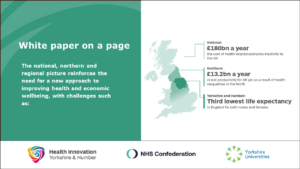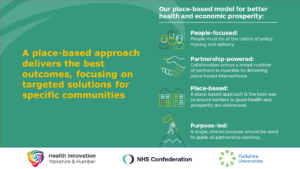Digital care homes model could save ICBs £14 million annually, report shows

New report sets out a blueprint for transforming health and care in the community, with real-world evidence suggesting that scaling the model across an ICB could reduce the cost of healthcare by £14.2 million annually, and over £360 million nationally.
A validated, integrated model of care delivery is transforming health management in care homes, with the potential to reduce the cost of healthcare for the NHS by millions annually, according to a report published today.
Led by Kent County Council, the model provides the care sector with tools and skills to enable early detection of deterioration and management of health risks – such as infections, chronic cardiac and respiratory issues, and other common causes of falls and exacerbations – reducing unnecessary conveyances and hospital admissions. The approach could deliver £14.2 million in annual savings for local health systems if scaled across all care homes in the Kent and Medway ICB alone, with savings from national adoption exceeding £360 million.
Transforming care through digital innovation and proactive change management
The report, co-authored by Care City – a Barking-based centre for healthy ageing and regeneration – and healthcare consultancy Candesic, in collaboration with Kent County Council and Feebris, proposes a blueprint for integrating data and technology to improve care delivery in the community. The model is built around three key pillars:
- Proactive health in care homes: Equipping care staff with advanced training and digital tools to detect health issues early, preventing avoidable deterioration and exacerbations
- Integrated multi-disciplinary collaboration: Improving coordination between care homes, GPs and community health teams through a connected digital infrastructure, allowing for the delivery of joined-up, person-centred care for residents with complex needs
- Hospital-level care in care homes: Ensuring residents receive the care they need in the most suitable setting, cutting down avoidable hospital admissions and supporting care homes to manage acute health needs where appropriate
Real-world impact: Improving outcomes while reducing avoidable utilisation of emergency services
Focusing on the first pillar, the report includes an evaluation of a 12-month initiative running in Kent and Medway. Through this project, the Feebris virtual care platform was deployed across 24 care homes to deliver early risk assessment and proactive monitoring for 1,000 residents.
The evaluation demonstrates the impact of the integrated digital model of care delivery proposed, with key findings including:
- 75 per cent of care homes adopted proactive health workflows, enabling earlier detection of deterioration
- 8x fewer care homes experienced high volatility in care needs, improving resource allocation
- Over 50 per cent fewer care homes reported above-average ambulance callouts, with 70 per cent fewer reporting high hospital conveyance rates
- Hospital admissions dropped by 20 per cent, reducing strain on the NHS and improving resident outcomes
For care home residents, this means receiving personalised care that allows them to remain healthier for longer in a familiar environment. By detecting deterioration early, the appropriate healthcare service can intervene sooner and reduce any potential distress and disruption caused by emergency admissions while also mitigating risk of deconditioning.
£530,000 in NHS savings for every 1,000 care home residents annually
Over the 12-month period, the reductions in hospital admissions and ambulance callouts resulted in an estimated £530,000 in NHS savings, with 860 bed days freed up for every 1,000 care home residents, leading to a 5.2X Return on Investment.
Helen Gillivan, Head of Innovation and Partnerships at Kent County Council, said: “We’re proud to have led this successful initiative at Kent County Council, which is making a real difference to care homes, care staff and some of our most frail residents across Kent and Medway. Care teams tell us this system has become part of everyday practice, helping them to deliver more responsive, person-centred care that benefits both staff and residents.
“Social care is critical to the sustainability of our entire health and care system. As this research shows, investing in the sector doesn’t just benefit care providers – it strengthens the wider system, improving outcomes for our staff and for residents while easing pressure on health services.”
Removing barriers to scale: What can we change today to drive long-term transformation?
While the findings highlight the impact of digital innovation in social care, the report also puts the spotlight on key structural barriers preventing widespread adoption. It highlights a number of recommendations, including:
- Restructuring financial incentives to enable social care providers to resource delivery of preventative interventions, given the impact demonstrated with the model adopted by Kent and Medway.
- Strengthening the care workforce through greater investment in training and development, helping to attract and retain talent and recognising the vital role played in supporting ageing populations and reducing growing system pressures.
Matt Skinner, CEO of Care City, said: “This report is proof that social care can and must play a bigger role in the future of our health system. By empowering care staff with the right tools, training and trust, we can improve outcomes, reduce emergency demand and deliver more joined-up, preventative care. It’s been a privilege to support this work and co-author a blueprint for transformation that we hope will inspire action across the country.”
Dr Michelle Tempest, Senior Partner at Candesic, said: “This report represents a huge effort in gathering real-world data from across health, community and social care to showcase real impact and set out a proven model of transformation that meets the needs of our ageing populations. At a time when ICBs are under immense pressure and need support, this work provides an actionable roadmap to driving sustainability and impact.”
Tracy Stocker, Director of Operations at Medway NHS Foundation Trust, said: “We are pleased to see the results of our colleagues in Kent County Council and excited to say that we are aligned in our approach and looking forward to linking this work up with our Virtual Hospital vision. This is a springboard to building connected virtual ecosystems of care, centred on the patient, meeting them where they are, and coordinating our resources in the most efficient way.”
Dr Elina Naydenova, CEO and Co-Founder of Feebris, said: “It’s long been clear that transformational change is required to meet the growing challenges faced by the system, and as today’s report highlights, our partners at Kent County Council are leading the way with their approach. Given the tremendous financial pressures on health and care globally, now is the time for a grassroots movement of forward-thinking organisations to come together and evolve the care model to meet these challenges head-on.”
A summary and the full white paper can be accessed here.
For more information or to arrange an interview, please contact leo@feebris.com.






